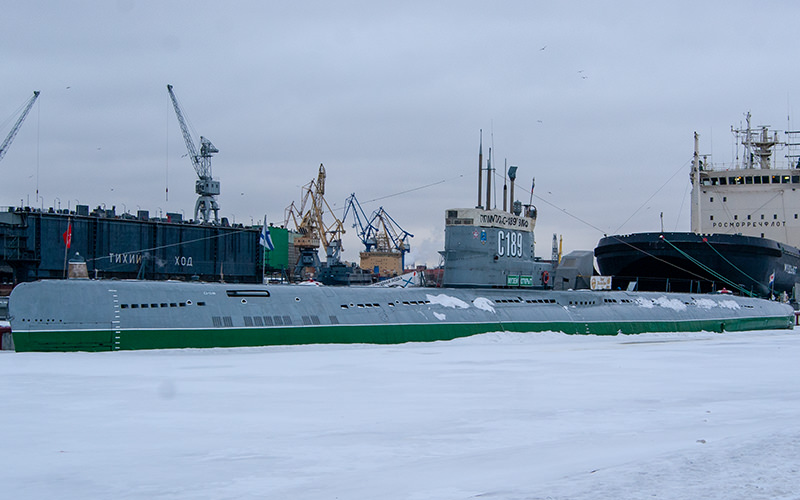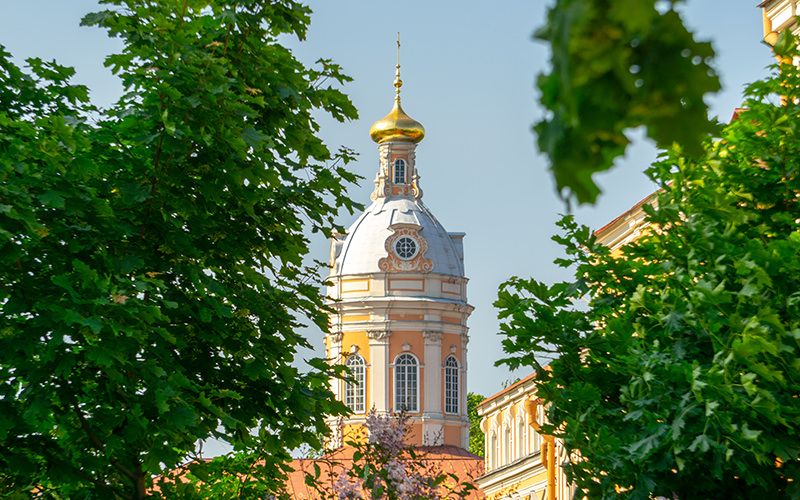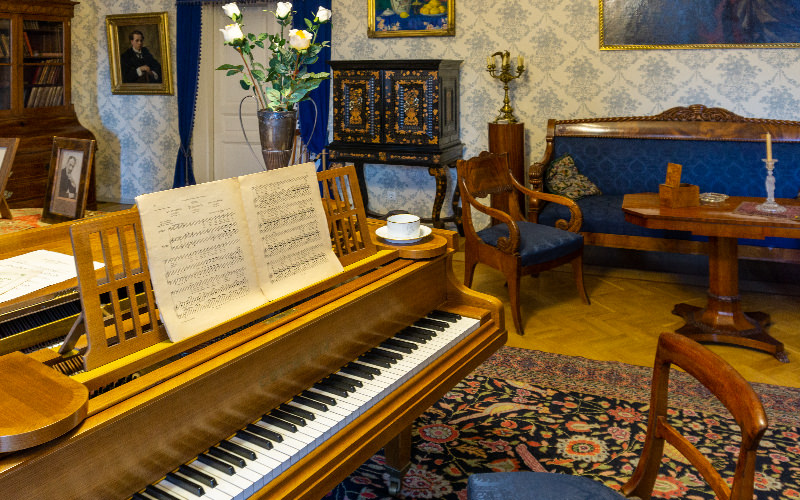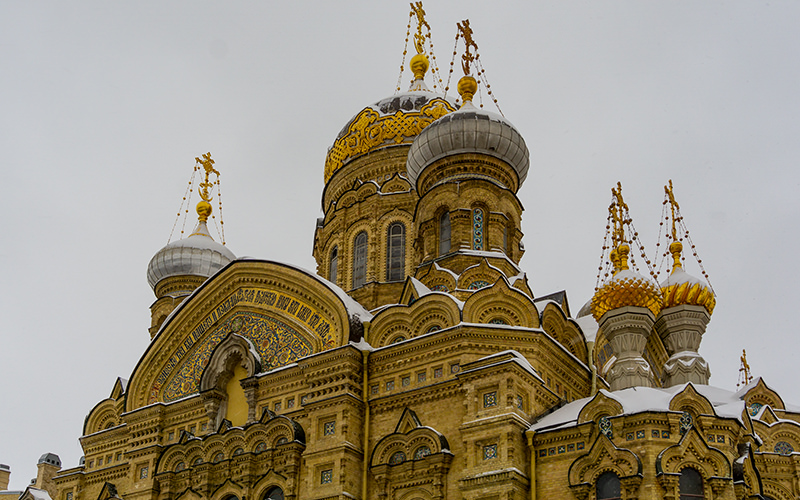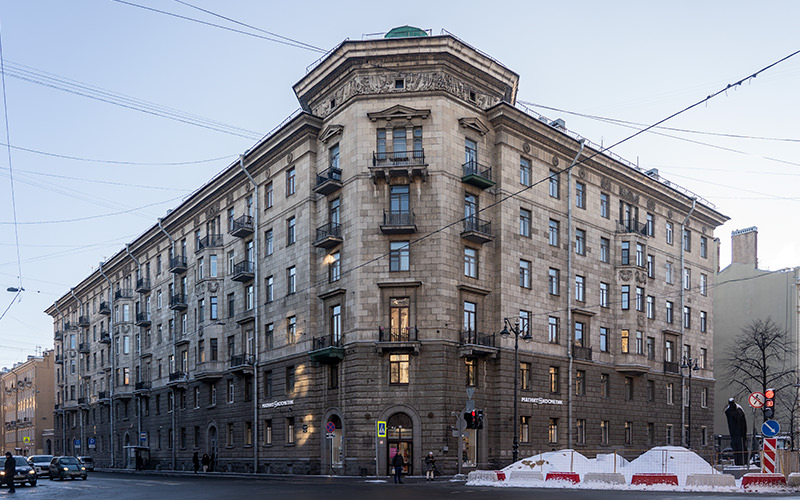The icebreaker "Krasin" was built in the United Kingdom over a century ago, in 1917. Initially, the vessel was named "Svyatogor" and only received its current name in 1927, ten years after its construction.
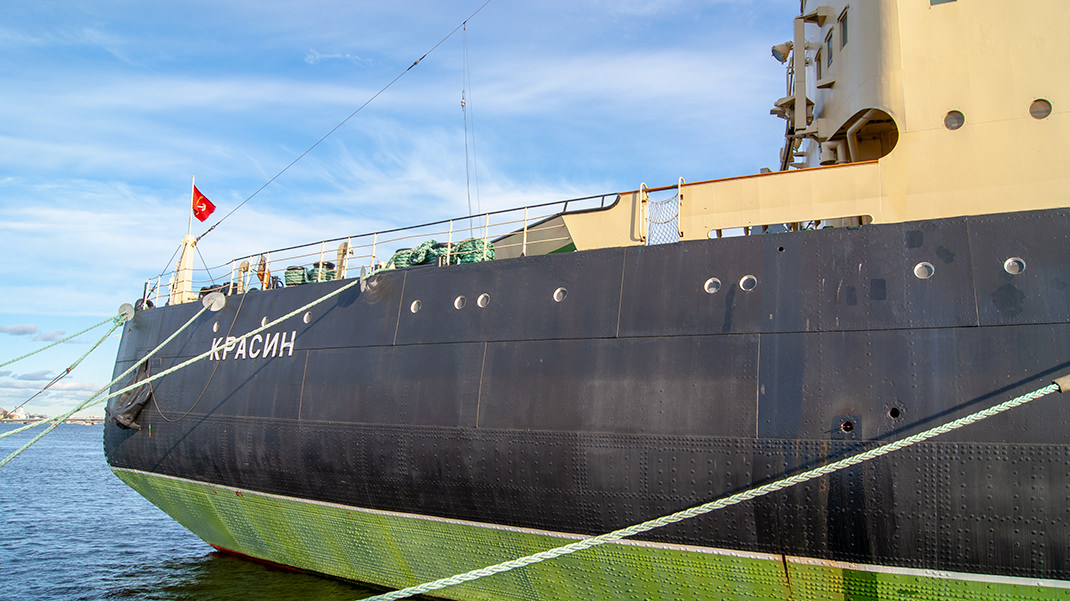
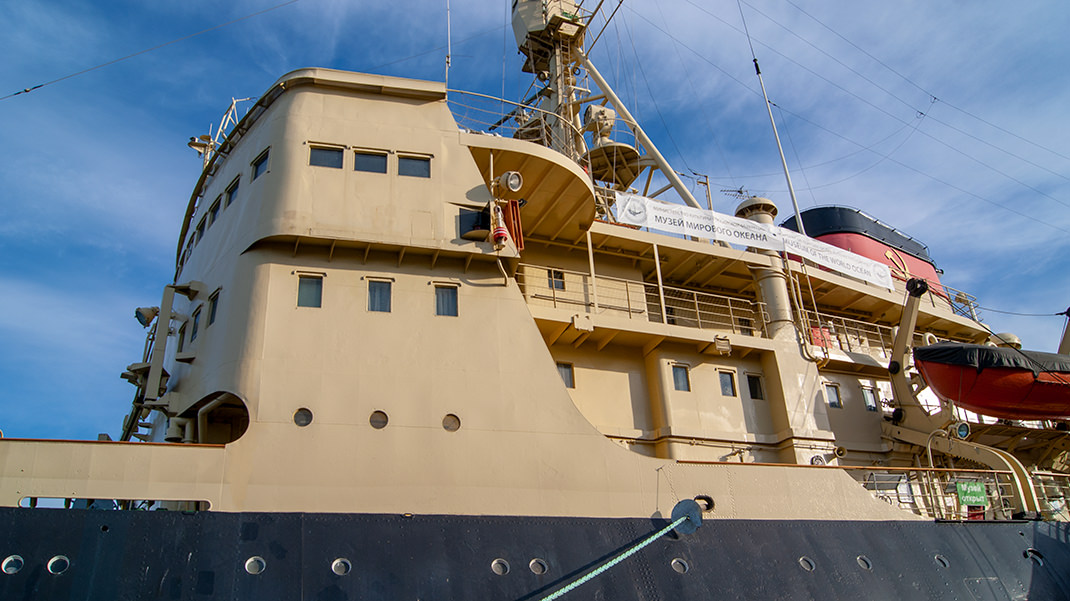
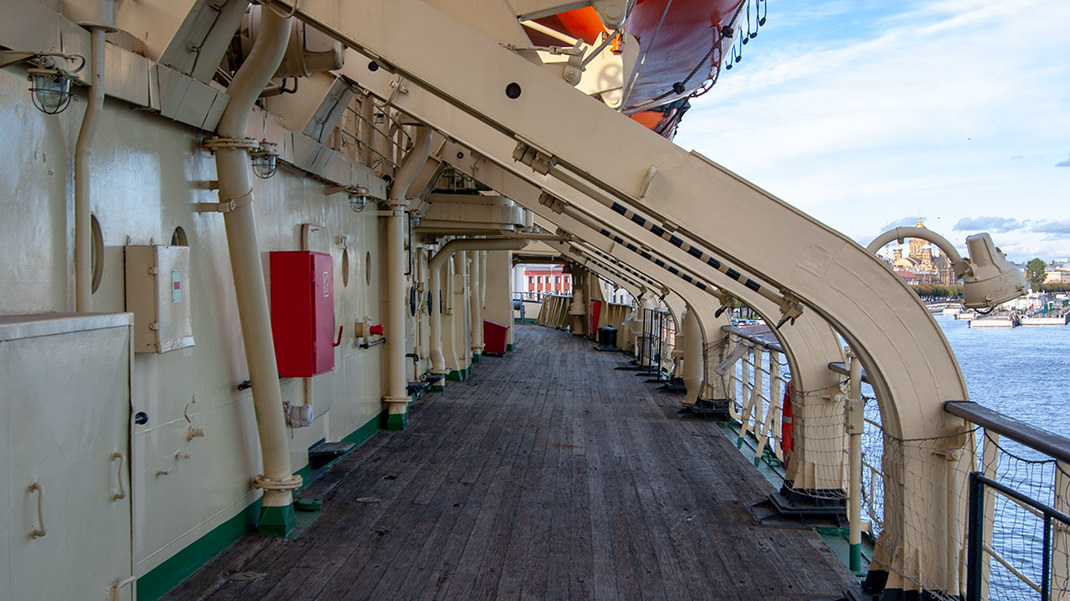

Since 1999, the "Krasin" has been towed to its permanent berth in St. Petersburg, and in 2004, it was opened to visitors as a branch of the World Ocean Museum.
How to Get There
The nearest metro station is "Vasileostrovskaya." It is about a 2-kilometer walk from the station to the ship.
When exiting the metro, head towards the pedestrian 6th and 7th lines of Vasilievsky Island. These lines will take you to the Lieutenant Schmidt Embankment. Then, turn right at the Neva River and walk straight until you see the "Krasin" docked at the shore.
The cost of an adult ticket is 400 rubles (as of autumn 2018). Discounts are available for students and pensioners. Bank cards are accepted at the ticket office. Tours are conducted every hour from 11:00 AM to 5:00 PM, Wednesday to Sunday. Please note that visitors must wear comfortable clothing and shoes — high heels are not allowed.
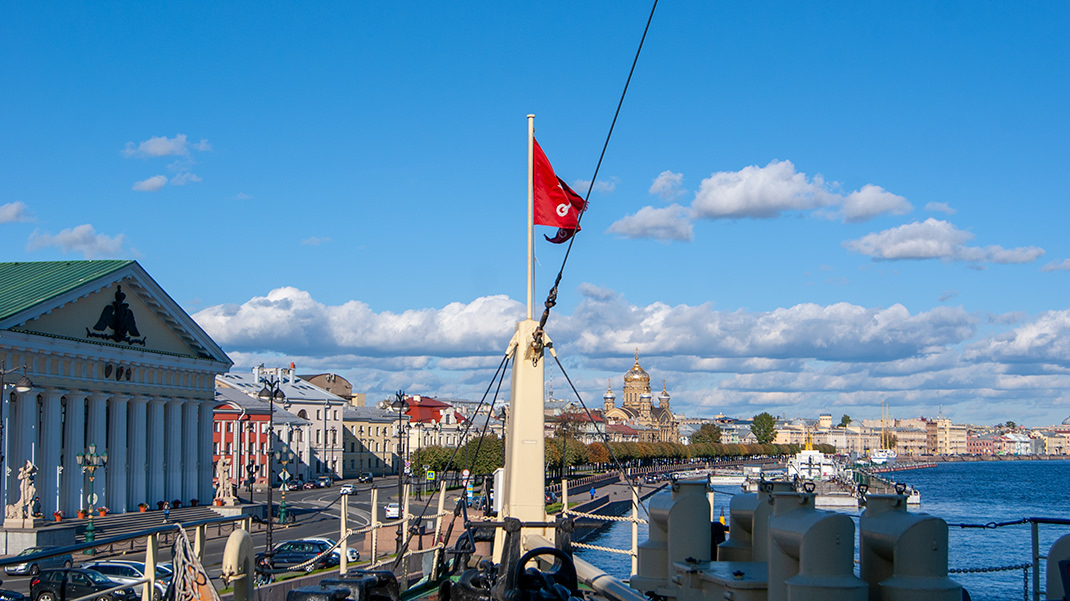
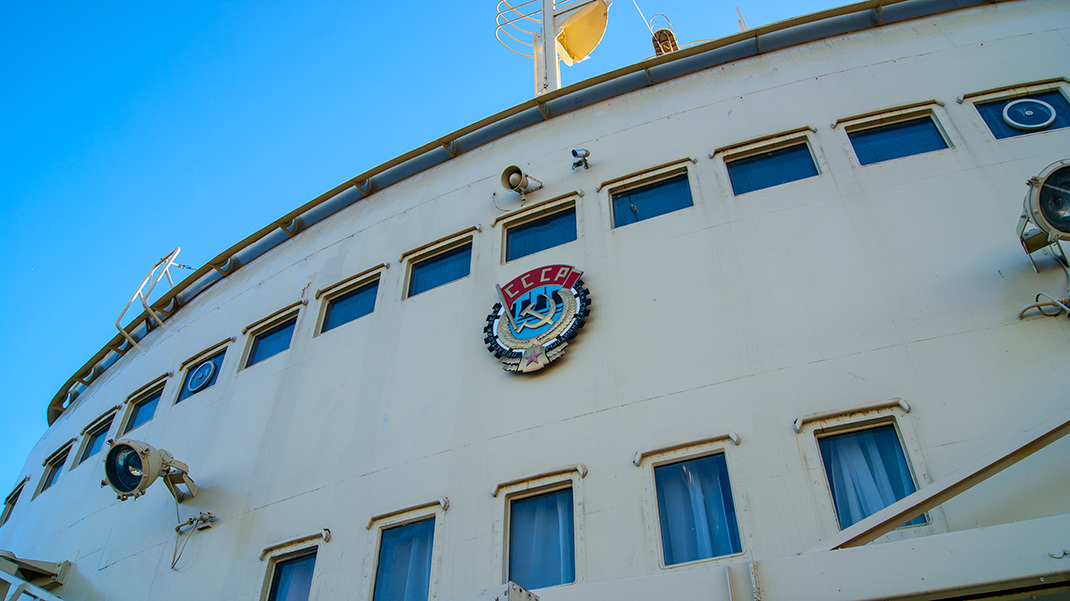
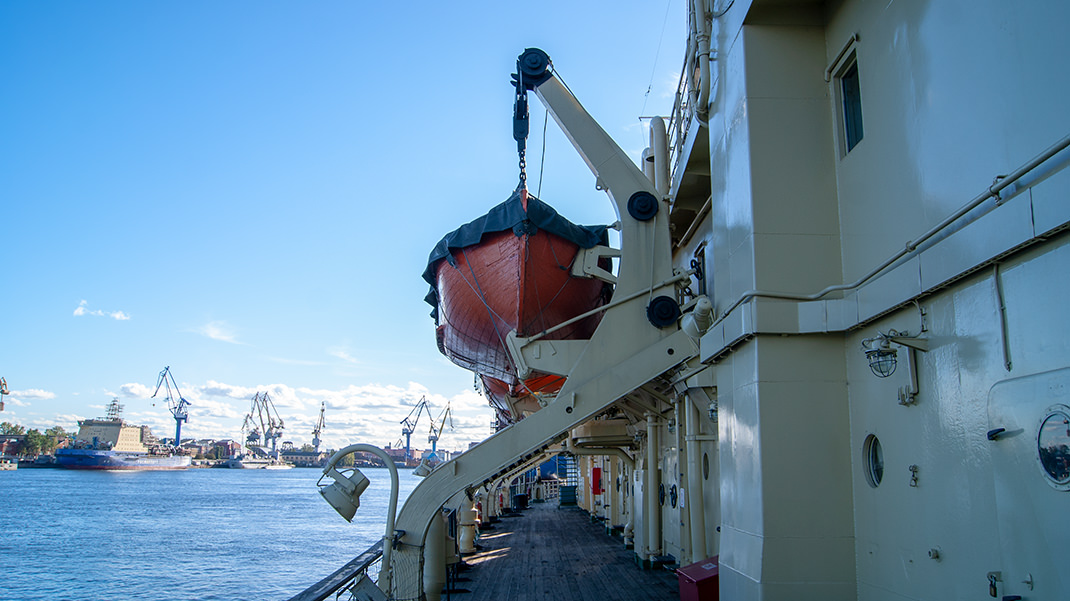
The tour of the icebreaker begins at the anchor mounted on the deck. The guide provides a history of the ship and its achievements in rescue operations. In 1928, the "Krasin" gained worldwide fame as the only vessel capable of reaching the site of the crashed airship "Italia," which had gone down near the North Pole. On board was an expedition led by Italian General Umberto Nobile.
Next, we move to the bow of the ship and continue inside. The next part of the tour takes place in the dining saloon. Here, we learn about the construction history of the "Krasin" and interesting facts about its "marine" life. For instance, all the chairs in the dining saloon are bolted to the floor for crew safety, and tables are divided by small partitions to keep dishes from sliding off during rough weather or storms.
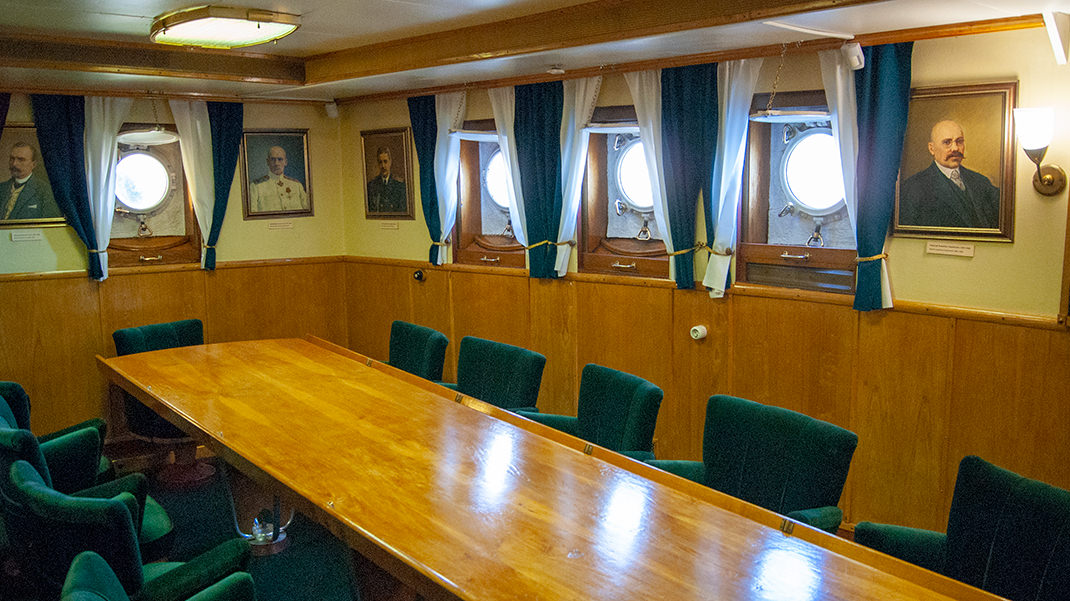
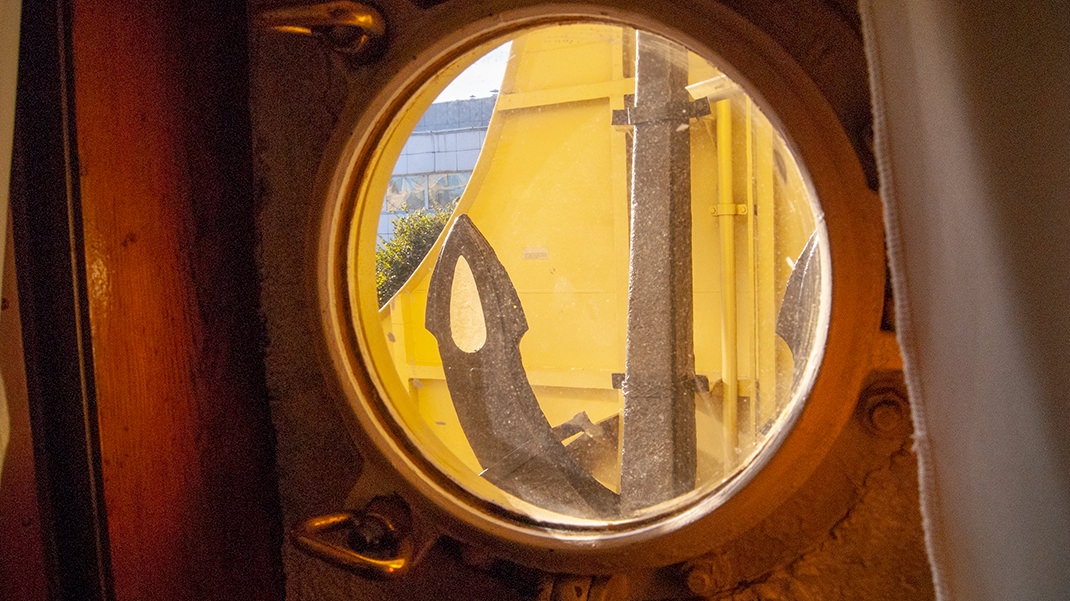
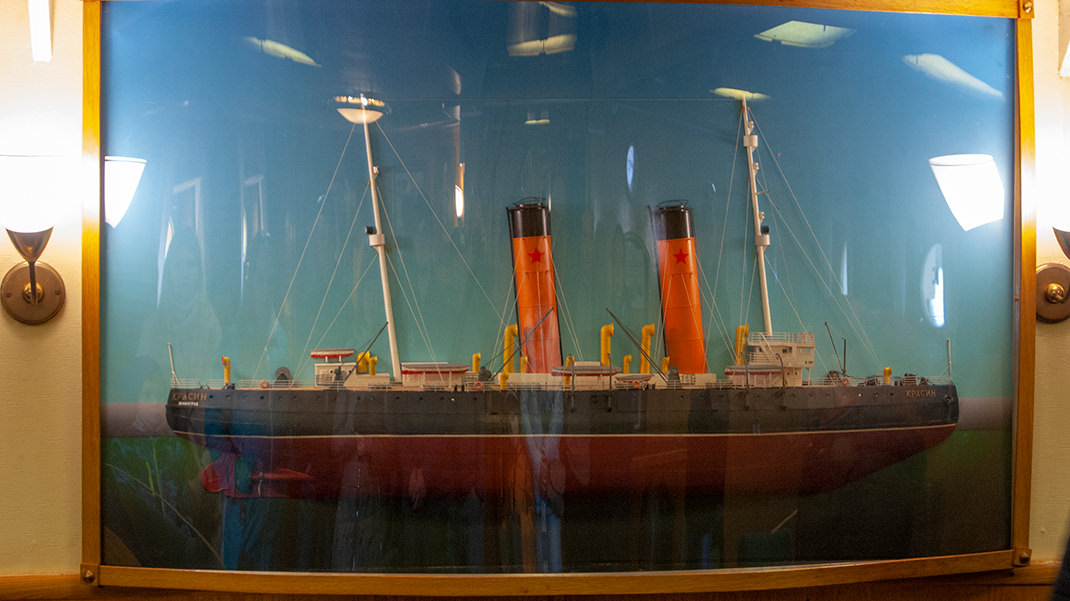
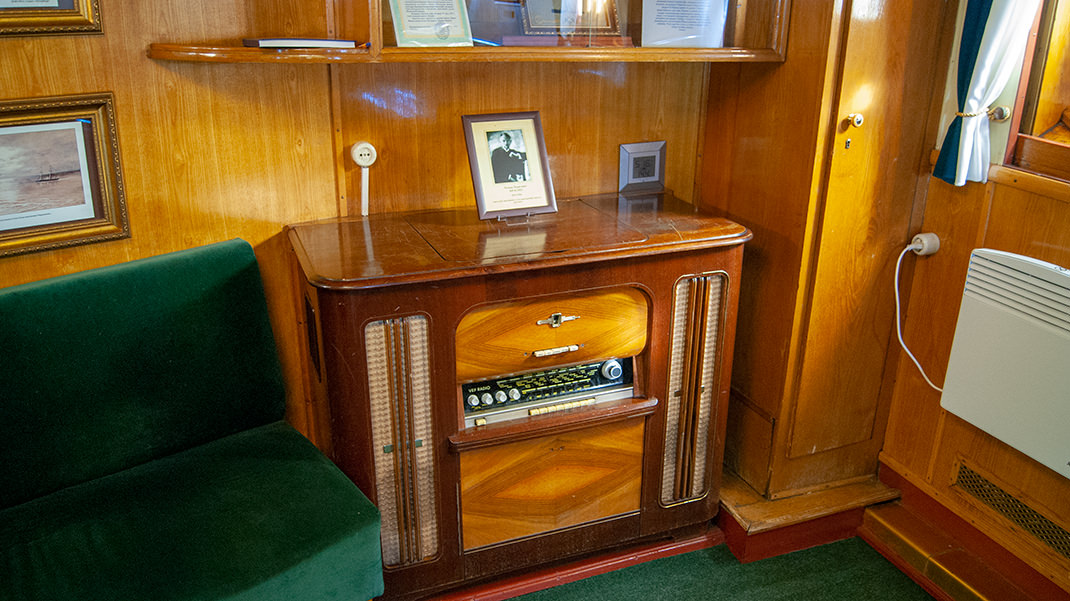
The next stop is the captain's cabin. This is a relatively large living space equipped with everything necessary for comfortable living and relaxation. The cabin includes a small office, a rest room, and a bedroom with an en-suite bathroom.
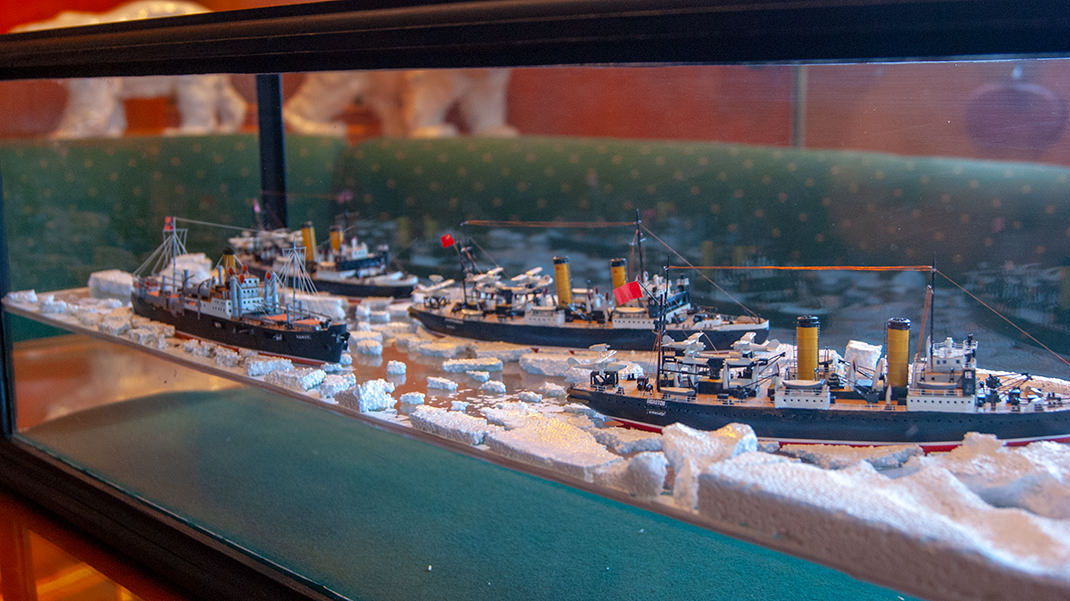
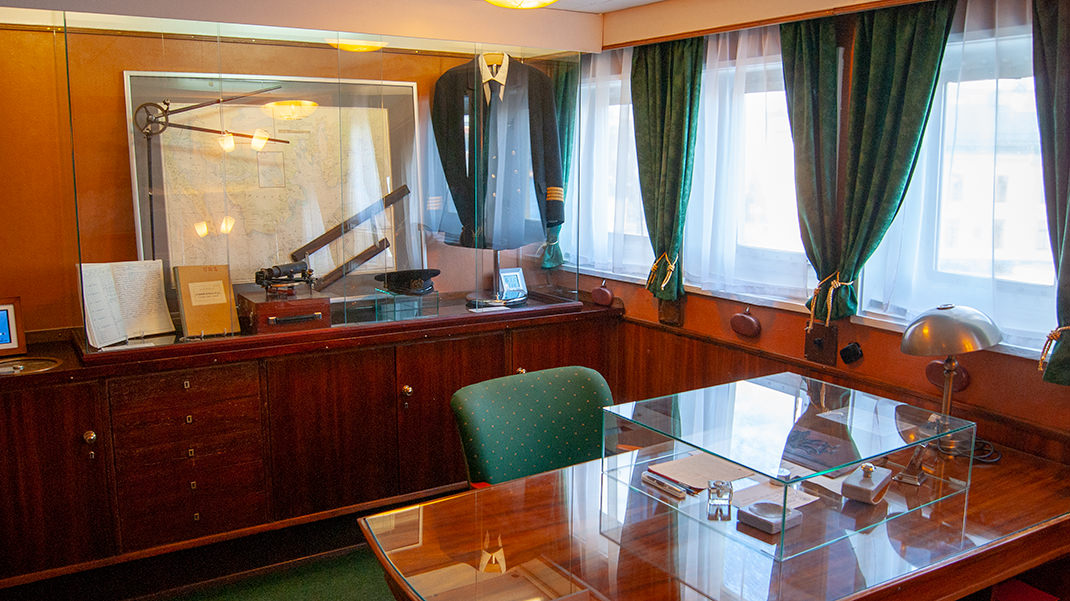
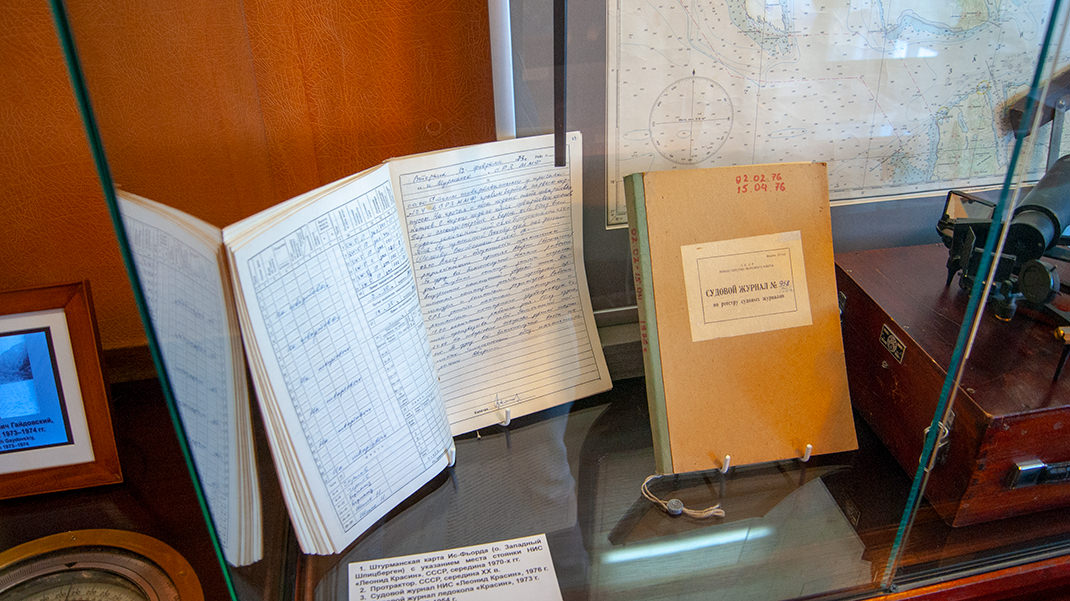
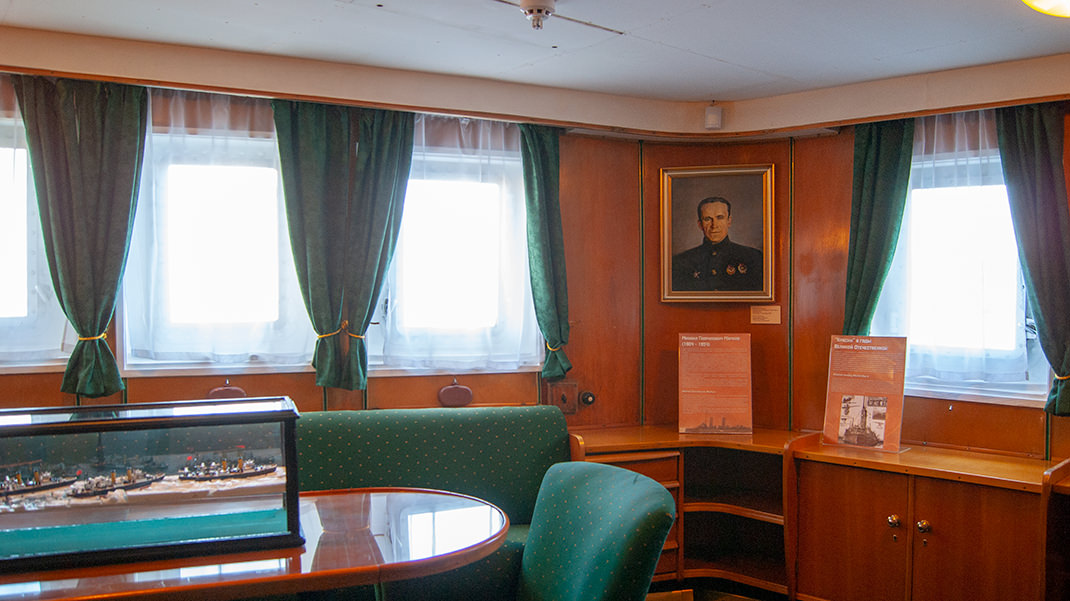
We proceed to the navigator’s and then to the wheelhouse. Here, we encounter a range of interesting instruments for operating the icebreaker: the ship's wheel, the radio operator's workspace with a telegraph key, and even an operational echo sounder. It’s worth noting that the wheelhouse was quite cool in September.
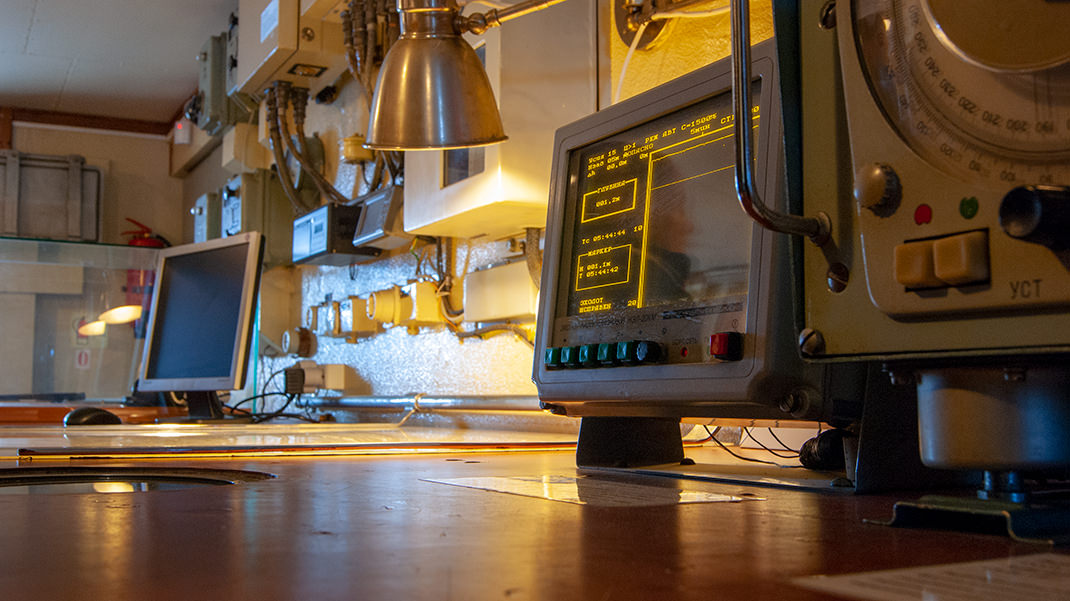
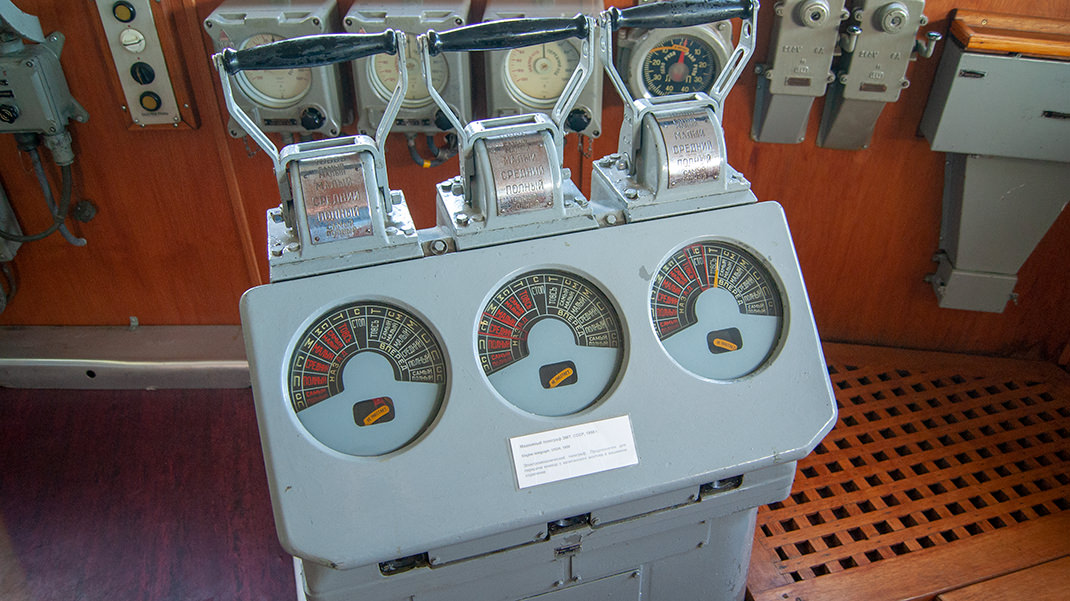
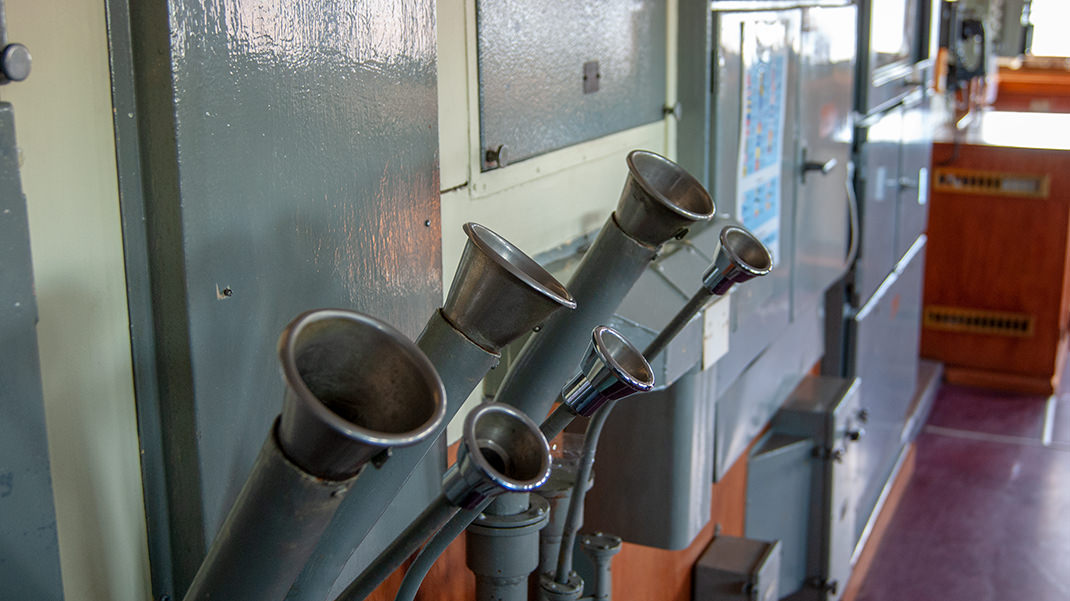
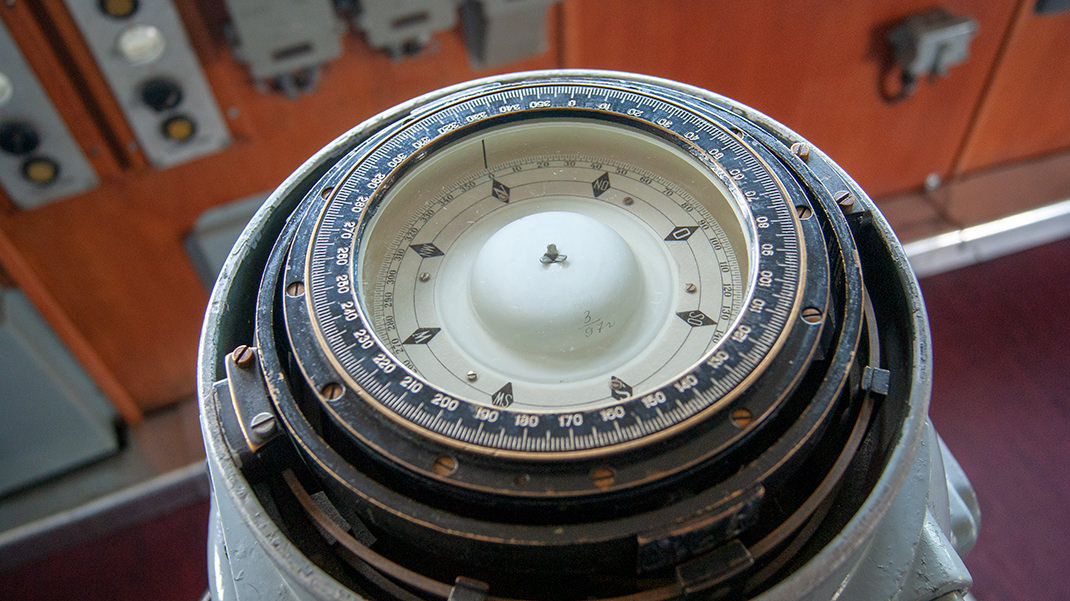
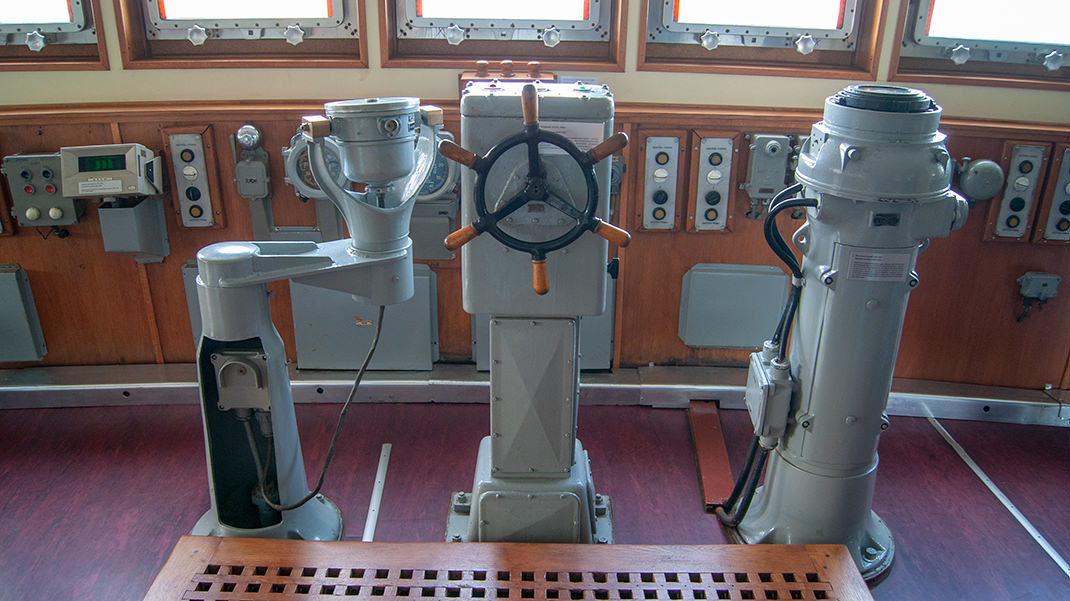
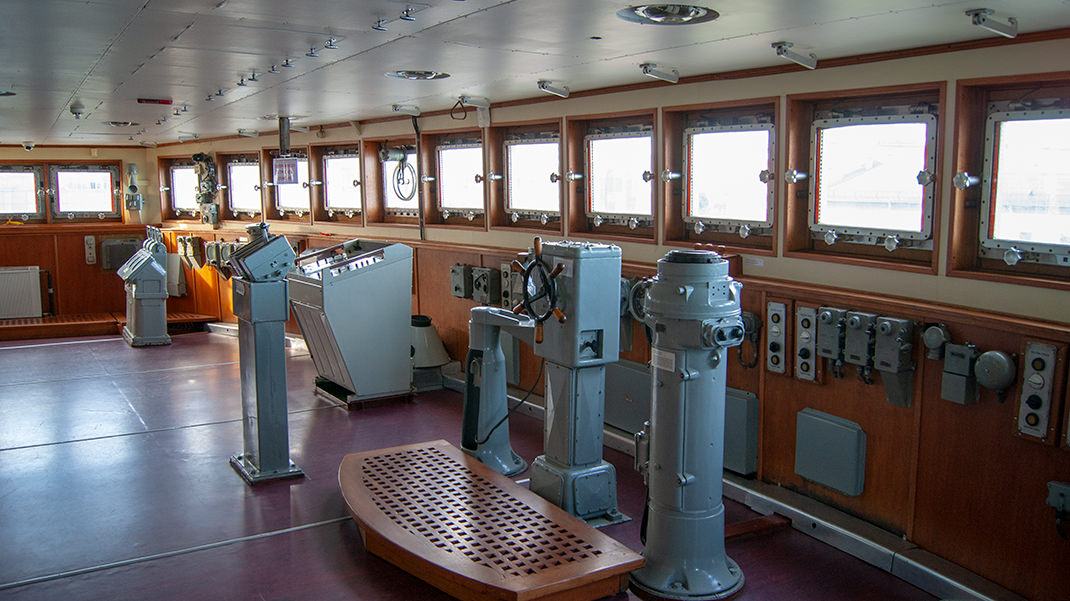
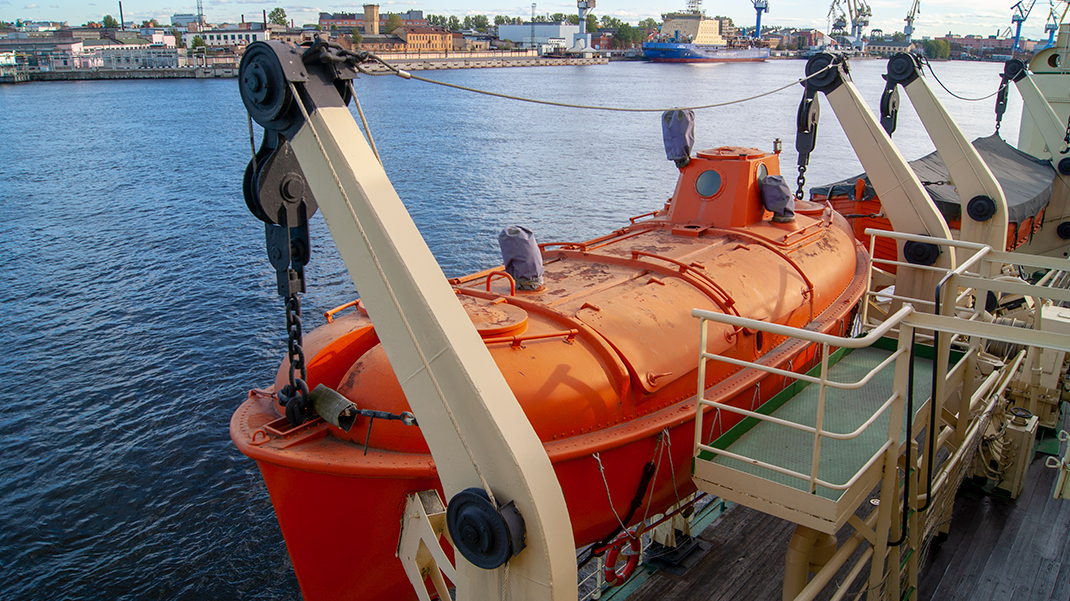
The tour concludes at the stern of the ship. From here, you can see the nearby nuclear icebreaker "Sibir" under construction. We continue our exploration of the "Krasin," but now we head to the heart of the ship — the icebreaker's engine room.


